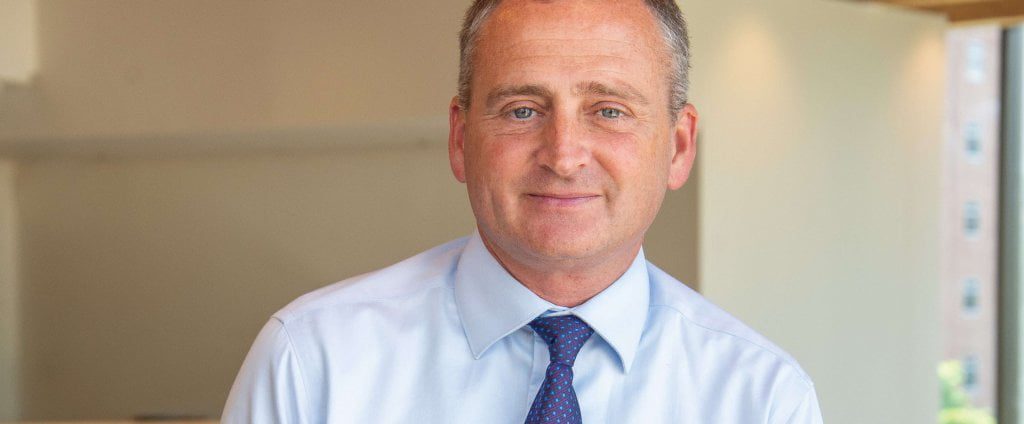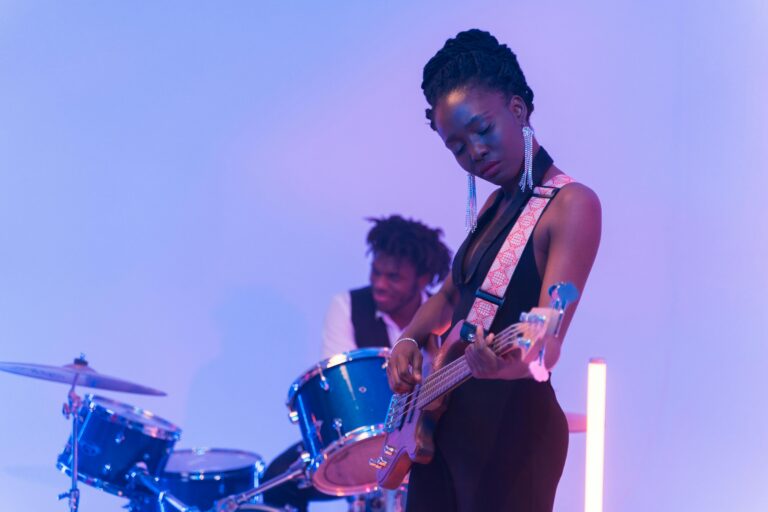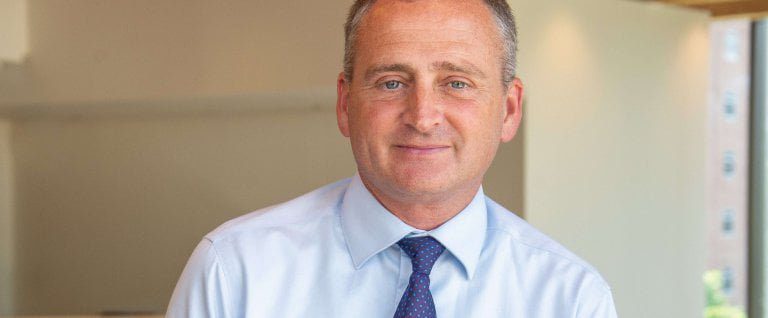What do you think about the University of Windsor, and why do you think that?
According to Dr. Chris Houser, dean of the Faculty of Science since July 2016, the story many of us tell ourselves about Canada’s southernmost university leaves a few important pages missing.
In actual fact, Windsor’s Faculty of Science has long been producing globally significant, world-changing research, much of which might seem spirited off the pages of a science-fiction novel. If this sounds surprising, I suggest you keep reading.
Dr. Houser is a geomorphologist of coastal and aeolian environments, which essentially means he travels the world to study beaches. (Tough racket, I know.) Before coming to Windsor, he was previously associate dean for undergraduate affairs and faculty development in the College of Geosciences at Texas A&M.
“People in Windsor don’t have a tendency to brag about themselves,” he notes. “I came to Windsor from Texas; Texas does nothave problems bragging. I came in with a sense of pride as to what Windsor represented—what we could do as a Faculty of Science or an institution—and made sure we started to tell our stories.
As Houser sees it, bragging is essentially storytelling, and some amount of it is necessary to oppose UWindsor’s “out of sight, out of mind,” status in the collective Canadian consciousness. “When I got here three years ago, I was shocked at how few people in the community knew what the university did—let alone what science in the university was doing,” he recalls. “It is important that people in the region know the level of advanced science that’s occurring at the university. We are making a major research impact—not only on the region but globally.”
When addressing student experience, Houser leans in to the evidence-based virtue-in-smallness messaging espoused by American liberal arts colleges. He eagerly enumerates his new employer’s advantages, including smaller across-the-board class sizes, uncommonly favourable faculty-to-student ratios, and one of the very highest rates of undergraduate research participation in Canada. “We are notWestern,” he stresses, positively. “That message is starting to really take. We’ve made ourselves the programmatic and geographic destination for science in the province.
“People assume by the names that the big schools are better, but I think what we are doing is as good or better than Western, McMaster, or Toronto,” he continues. “We are that leading edge. We’ve competed successfully against Toronto and McGill and some of these larger institutions for faculty. They chose Windsor because they know we’re small.”
But not too small: this December, the Faculty of Science inaugurated a state-of-the-art, energy-efficient science, research, innovation, and industry collaboration facility. The $30-million, 46,000-square-foot Essex Centre of Research (“CoRe” to those in the know), is the outcome of a unique multilateral partnership at federal, provincial, and university levels. An expansive addition to the existing Essex Hall, the new facility consists of three floors of open-concept lab space designed to enable leading-edge research and development and to encourage interdisciplinary collaboration. “I think it’s important to recognize that the federal and the provincial governments—and obviously the university itself—invested in the science that is occurring at the University of Windsor,” says Houser. “The federal government recognized that what we were doing in transnational health and advanced materials is important.”To get a better sense of the bleeding edge work going on behind laboratory doors in the faculty of science, The DRIVE sat down with Drs. Tricia Breen Carmichael, Charu Chandrasekera, and Dan Xiao.
“We’re not at the end of the world,” their dean stresses. “We arethe destination. We can do things that a lot of other people can’t.”
Charu Chandrasekera Thinks Outside the Cage
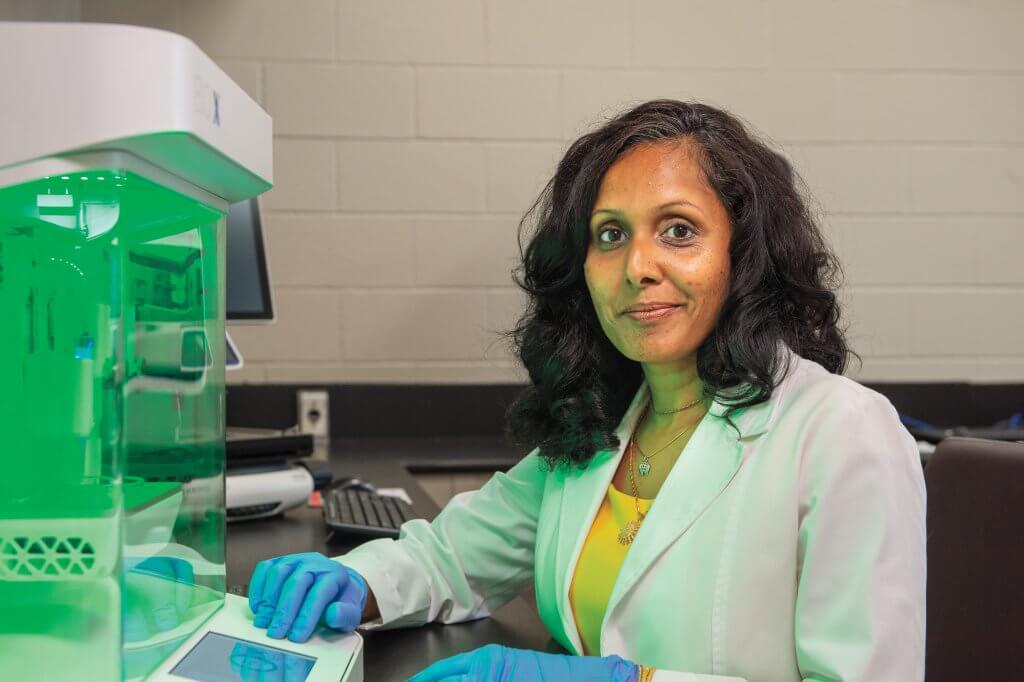
The University of Windsor placed a major bet on one envelope-pushing biologist and her controversial plan to replace animal-based research with modern methods rooted in human biology that promise not merely to replace, but also to outperform conventional techniques. According to her Dean of Science, if it works, it’s going to be revolutionary.
In 2011, a heart attack changed everything.
Dr. Charu Chandrasekera’s father was convalescing from quadruple bypass surgery. A University of Calgary PhD graduate, Chandrasekera had set out to make a meaningful career in cardiovascular science and wondered if the work she was doing would one day help to protect hearts from damage in the event of a myocardial infraction. She queried a leading professor—a 20-year veteran primary investigator under whom she was running experiments with mice and rats—about the usefulness of certain protein receptors for protecting human hearts like her father’s.
“That was the defining moment for me; I still remember exactly what he said and how he said it,” Chandrasekera now recalls. “How the hell would I know?I’ve never looked at this in humans.”
As Chandrasekera explains, 95% of drugs tested and found to be safe and effective in animals fail in human clinical trials. “We have a scientific culture obsessed with curing animals that often forgets we are attempting to cure humans,” she stresses. “We can continue along this path for another century and we will not make major progress.”
Chandrasekera left academic research after that experience to join an American non-profit that promotes alternative methods to animal testing and higher standards in biomedical research. She was exposed to an entire community of academics, industry figures, and government regulators who were actively shifting away from animal testing.
Today, a biochemist and molecular biologist approaching two decades’ experience in research focused on cardiovascular disease and diabetes, Chandrasekera is the founder and executive director of the University of Windsor’s Canadian Centre for Alternatives to Animal Methods (CCAAM) and its subsidiary, the Canadian Centre for the Validation of Alternative Methods (CaCVAM).
Launched in October 2017, the CCAAM is the first and only centre of its kind in Canada dedicated to the development, validation, and promotion of animal-free methods to research human disease and predict human drug and chemical safety. Its overarching vision is no less than to promote the replacement of animals in Canadian biomedical research, education, and regulatory testing through science, innovation, and ethics.
The CCAAM potentially represents a watershed moment for health research in Canada. Animal research has traditionally represented a good faith effort to advance biomedical science by emulating our diseases and drug responses, and it has led to breakthroughs like the discoveries of insulin and penicillin, but a swelling body of credible evidence indicates that the effectiveness of this research is at an all-time low.
The CCAAM research laboratory, which will host its official grand opening in October, ultimately aims to study human disease and test chemical toxicity using human cell and tissue-based systems such as 3D bioprinting and organoids—miniature three-dimensional organ-like structures engineered from adult human stem cells to recreate human biology in a petri dish. The first two projects will focus on diabetes-in-a-dish and Alzheimer’s-in-a-dish. On the day of our visit, her team had just printed human liver tissue for the first time in her lab.
“We have tools at our disposal to look at human biology in a completely different light,” insists Chandrasekera. “You can take these micro-engineered environments that emulate our natural physiologyand configure them in so many different ways to create diseases in a dish, or you can put them on a computer chip the size of a thumb drive on which you can do drug testing. You can test hundreds of diseases at once.”
The next pillar of the project willsee the CCAAM establish unique courses and programs in animal replacement science to educate future scientists, ethicists, and policymakers. “There was an advantage to hosting the centre at a university,” says Chandrasekera,“because you can develop the next generation of students, training them to think outside the existing, failing paradigm. Ten years from now, replacement of animal testing through alternative methods is going to become very real.”
This academic year, the CCAAM will offer its first undergraduate course, and Chandrasekera expects her first PhD student to begin in January. At the high school level, Chandrasekera is preparing to launch a major program aimed at phasing out animal dissection in science classrooms.
Meanwhile, the CaCVAMwill work side-by-side with regulators, primarily Health Canada, and international consortia to expedite the development, validation, and acceptance of alternative toxicity testing methods.
“When it comes to advancing alternatives to animal testing,” says Chandrasekera, “Canada is lagging behind many nations and we direly need government support—financially and legislatively—to even think about catching up to the progress already made in these countries.”
At present, Chandrasekera’s work is largely funded through a $1 million October 2018 donation by the Eric S. Margolis Family Foundation—the philanthropic arm of the former owner and chair of Jamieson Laboratories, which now focuses on animal welfare issues. It was the largest gift for research in the University of Windsor’s history.
The world’s very first similar centre, the Center for Alternatives to Animal Testing, was established at Johns Hopkins University in 1981. “I was six years old, learning to climb mango trees in Sri Lanka,” recalls Chandrasekera, who now stands professionally beside its founder, Dr. Alan Goldberg.
This spring, Chandrasekera received the Women for a Humane Canada award from Humane Canada, the national federation of humane societies and societies for the prevention of cruelty to animals.
An ethical vegan who wears a tattoo of her late cat’s pawprint on her forearm,Chandrasekera bristles somewhat at the suggestion that her work can be folded into any larger societal shift towards veganism, ethical consumerism, and a renegotiated understanding of humankind’s relationship with animals. “The centre is the future of biomedical research,” she stresses. “It’s the future of medicine. It’s the future of chemical safety testing. It’s not just me in a little corner doing this. It’s a global movement. Upholding the highest standards of ethical care of animals should happen in science regardless of anything else.” Fundamentally, Chandrasekera’s project is aboutadvancing science to benefit animals, yes, but also humans.
“If you look at anything in human history, it’s very difficult to change long-standing paradigms,” she continues.“It’s not easy, but the facts are there. When we were using horse chariots as the primary mode of transportation, we still aspired to fly. We did, and about 60 years from our first flight, we landed on the moon. That’s where we need to go in biomedical research, because we know the system is broken.
“If the ultimate goal of the scientific community is to advance human medicine, it’s time to prioritize human biology.”
Contact details: (519) 253-3000 x3086
[email protected] www.uwindsor.ca/ccaam
Dan Xiao’s New Image of Accessible Healthcare
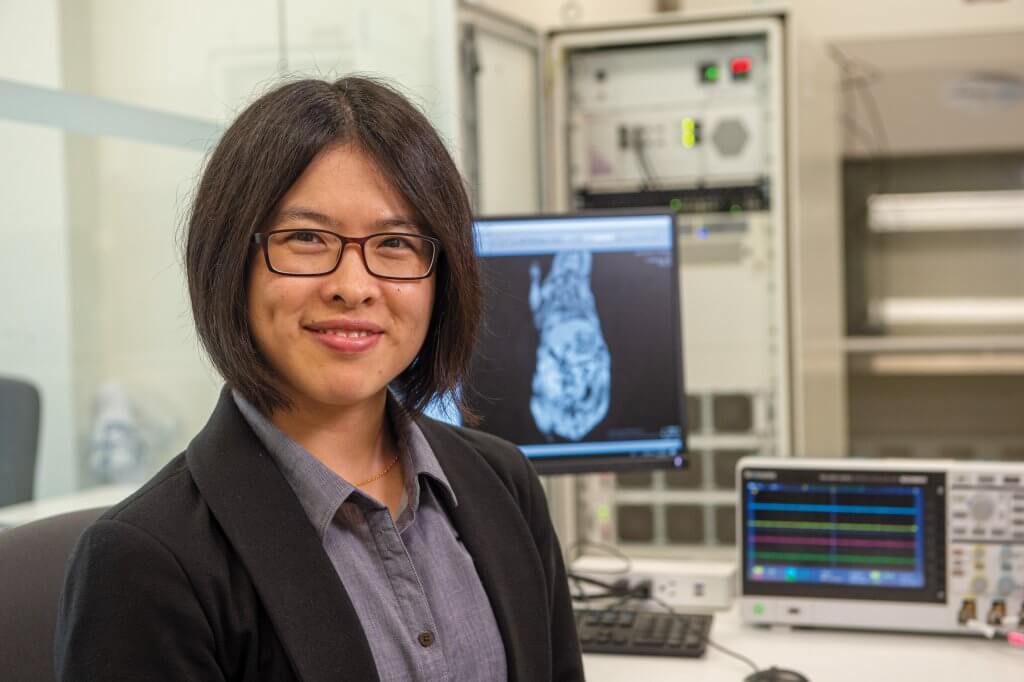
A University of Windsor physicist is an expert in magnetic resonance imaging(MRI) technology. Her lab is hard at work developing a portable and affordable handheld MRI device that might one day be taken into remote areas in Northern Ontario and elsewhere to improve healthcare for marginalized groups.
In science, everything is impossible until it isn’t.
During her job interview for a tenure-track faculty position at the University of Windsor, Dr. Dan Xiao told a story. Imagine, she prompted the hiring committee, a future in which MRI devices could be made tiny enough to cram into a small capsule. Swallow a pill, and a team of researchers could access sophisticated images of the inside structure of your digestive tract.
If this idea sounds like the stuff of science fiction, that’s because it is—at least for now. “It would be very, very hard,” Xiao says, smiling, but it’s a logical theoretical endpoint of an ambitious research project now well underway at the University of Windsor.
Xiao’s area of concentration is experimental biomedical physics, including medical imagining and diagnostic technologies. Buoyed by a $6 million federal commitmentfrom the Natural Sciences and Engineering Research Council of Canada that was announced in this past fall, Xiao worksto make potentially life-saving MRI devices small enough to fit in the palm of one’s hand.
For the uninitiated: MRI is probably the most flexible and powerful diagnostic imaging technique available to clinical medicine. In the simplest terms, MRI scanners produce amazingly detailed images of soft tissue, bone, and organs—including the brain—by looking deep inside the body. They use radio frequencies and exceptionally strong magnets to generate powerful magnetic fields that affect the water molecules comprising 70% of the body at a subatomic level. There are no known side effects.
According to Xiao, other popular medical imaging modalities, like X-ray and CT scan, produce comparatively simple single-contrast images.“With MRI,” she explains, “the contrast is really rich, and the information in there is very rich. I can differentiate one cell tissue from another based on microscopic-level properties.It’s very, very flexible data. Just by adjusting the parameters of your experiments, you can highlight different features very easily. So, the experiment design is very important.”
Xiao joined the University of Windsor in July 2017 from the University of New Brunswick, where she had completed a PhD, post-doctoral fellowship, and two years as a research scientist. Xiao came to Southwestern Ontario because, well, that’s just how the academic job market works: professors go where the work is.
Fortunately, it’s been a very happy marriage so far. “For the area of research I’m doing, usually you have a lot of people gathered in a very large group, sharing really expensive instruments, and all working together as a large research team,” explains Xiao, who is the only UWindsor faculty member working in her field. “I’m okay in that setting, but what I like about here is, although I’m by myself and it can be very challenging, I can do whatever I want, because there is nobody telling me what to do! It’s a very friendly, very good environment, and I receive lots of help from the senior faculty.”
Xiao’s research work is effectively split into two streams. She operates a conventional but miniaturized MRI instrument, which she uses to help several of her biological sciences colleagues perform research studies using mice and rats. The device is also appropriate for frogs, fish, or really whatever else can fit inside.
Xiao’s group designs new experimental methodologies—ways in which to collect and process imaging data—in collaboration with biomedical researchers who study cancer and brain function. “Based on what they study, we provide them a way to look at their subjects non-invasively,” she says.
Xiao’s less conventional work has fascinating promise.
“MRI is conventionally very expensive,” explains Xiao. “When people talk about MRI, they think about the big fancy instruments in hospitals. I’m trying to develop low-cost, cheaper MRI instruments so that point-of-care diagnosis is more affordable.”
I note that Dean of Science Dr. Chris Houser is fond of categorizing the device as a “backpack” MRI. Xiao laughs, happy to go along with that branding.
Really, the prototype would fit comfortably inside a modest lunchbox. To the untrained observer, it would seem to work similarly to an airport security wand—capturing images from a small box held close to the skin rather than fully enclosing the patient.
“For some applications, the information produced is sufficient to perform diagnoses in near-surface tissue,” says Xiao. “For example: skin disease, muscle issues, whatever you can think about that’s one centimetre below the surface.”
Essentially, Xiao’s challenge involves finely calibrating the device and designing innovative experiments to enable scientists to successfully interpret the data we know exists in the world. When scientists discuss signal processing, they inevitably talk about signal-to-noise ratio. A smaller, weaker magnetic field means a weaker signal, which means it’s harder to separate the information you’re trying to capture from the noise you are not.
“The major challenge of such devices is their sensitivity,” says Xiao. “The information is there, but it’s mostly buried in noise. That is why we are working a lot with machine-learning data processing to compensate and cope with the low signal.”
Fortunately, Xiao boasts a flexible background in experiment design and data processing, which are eminently transferable skills in her field. The portable MRI endeavour represented a very feasible research project even if she was unable to secure substantial funding early in her career.
Eventually, a fully functional handheld MRI machine could be taken into developing and remote communities where comprehensive healthcare may be difficult to access. It could also help diagnose problems closer to home. “Even if you have accessibility to a conventional MRI machine,” Xiao notes, “you will usually wait months for an appointment, because the cost of the machine is to the order of many millions of dollars. Here, the cost of the material and construction is essentially nothing.”
At the moment, Xiao’s lab includes seven students, most of whom are undergraduates. Under her supervision, undergraduates are already composing papers for peer review, writing sophisticated “deep learning” algorithms, building 3-D printers and restoring decommissioned electromagnets to solve complex problems.
“They’re quite happy that, as undergraduates, they get to work on real research projects,” says Xiao, noting that this access to research assistantship is a meaningful advantage of studying in a smaller department.
For the students, as for their advisor, the possibilities are virtually endless.
Tricia Breen Carmichael Weaves Her Magic
One University of Windsor chemistry professor is developing the wearable, washable materials from which we’ll build the consumer electronics and medical devices of the future. Soon, her high-tech textiles will feature biosensors capable of measuring pressure, motion, pulse, and geospatial location—all while feeling as comfortable as your favourite sweatshirt.
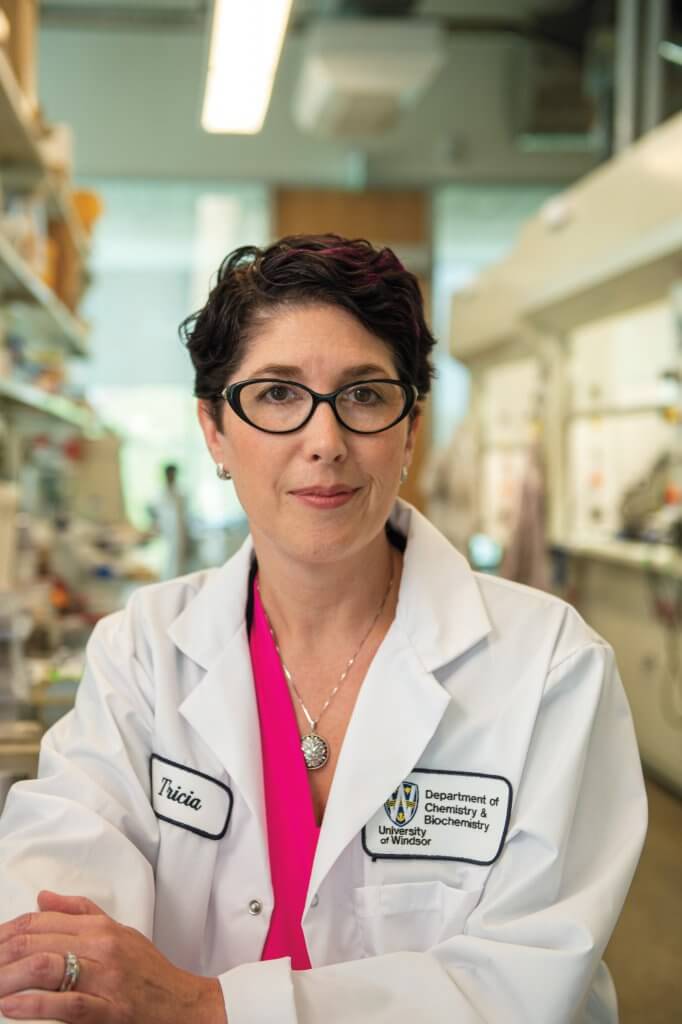
Remember the Shoe Phone? Dr. Tricia Breen Carmichael can’t forget it.
A professor of surface and materials chemistry at the University of Windsor’s Department of Chemistry and Biochemistry, Carmichael heads a research group focused on developing new materials and methods for the fabrication of stretchable and conductive textile-based wearable electronics, less cumbersomely referred to as “e-textiles.”
According to her, we have wanted to wear technology for a very long time.
Carmichael’s public lecture slides include illustrations and photographs of early “wearables” invented by eccentric visionaries like Hugo Gernsback, founder of the seminal science-fiction magazine Amazing Stories and namesake of the Hugo Awards for speculative literature. Gernsback’s devices, which date back to the 1920s, include primitive television goggles that use tiny cathode ray tubes, and “The Isolator, a bizarre anti-distraction helmet. “I have a fascination with those old devices,” admits Carmichael, who is also an associate dean in the Faculty of Science. “Some of them are so crazy!”
Often, these consumer objects were rooted in sound ideas, but the technology of the time hadn’t caught up with their inventors’ imaginations. “You couldn’t really execute it,” Carmichael explains. Nobody really wanted to take off their shoe to make a phone call.
Today, relatively accessible devices like FitBits and smartphone-integrated virtual reality headsets suggest we really are living in the future. “But if you look at what was then and what is now,” Carmichael cautions, “the wearability hasn’t really changed that much. Modern devices are still very obvious. They’re not integrated with what our bodies are like—which is soft—and they’re not really integrated into our daily lives. You have to put them on deliberately.”
According to Carmichael, the logical next step is to integrate functionality into experimental textiles directly. “How do you take clothing and add this function to it so that it’s just there?” she asks. “That is the type of question we look at in my lab.”
In simplified scientific terms, Carmichael, works to integrate functional materials such as metals, carbon nanotubes, nanowires, graphene, and electroluminescents with elastomers to prepare stretchable components, which she then uses to make electronic devices that operate reliably in dynamic conditions.
In the case of textiles, Carmichael again looks to the past to find the future. “We’ve been developing textiles since the beginning of civilization,” she notes. “We have a huge variety to work with if we want to make them functional. In science, the structure of the textile is the problem: each one has this 3-D architecture that you have to deal with.”
Carmichael completed a PhD in organo-metallic chemistry—a completely different area of her discipline—at the University of Windsor in 1996. She used that degree as a springboard to a two-year postdoctoral fellowship at Harvard, where she pioneered new methods for the three-dimensional self-assembly of electrical connections.
Between 1999 and 2005, before returning to her alma mater as a faculty member, Carmichael worked in private industry at the IBM T.J. Watson Research Center in Yorktown Heights, New York. “It was fairly leading-edge research,” she notes. “I worked on and started to learn about organic electronics there. I just continued from that, and got interested in soft materials, polymers, and textiles—trying to solve those problems.”
Today, Carmichael holds more than 25 worldwide patents.
While early research projects largely focused on threading tiny wires through fabrics or printing on them using conductive ink, both approaches tended to add bulk to the material while decreasing flexibility.
Carmichael’s lab uses a series of chemical baths in order to subtly but significantly change the surface of a fabric while arriving at a surprisingly soft and stretchable end product. In one breakthrough textile, each individual fibre is coated in a layer of gold—an excellent conductor that very rarely irritates the skin—less than one-one-thousandth the width of an average human hair. At the moment, the product is just a small patch, but the underlying logic is scalable. “Something like this is wiring,” Carmichael explains. “It just looks like gold fabric, but it’s conductive and durable. We made an imitation sweat solution, and we did the laundry cycles in the lab with regular detergent. And then my student worked out with it on her clothing and we looked at the changes; it was stable.
“The popular perception is that this is kind of cool, but sort of gadgety,” continues Carmichael, who offers the self-lacing sneakers from Back to the Futureas an analogue in the popular imagination. “The thing is, there’s huge potential here for the aging population. Detecting slips and fall or looking at different patterns of behaviour or mobility could be very important. And for that population, it has to be really wearable.”
Building on this foundation, Carmichael and her group have made inroads towards wearable textiles with embedded light-emitting devices that might be used for safety clothing. Another project involves studding clothing with imperceptible sensors that could constantly monitor one’s pulse, blood pressure, sweat levels, or location. Performance tracking and injury detection applications for athletics are already driving investment in the field.
Carmichael’s modestly sized lab comprises approximately 12 people, including one postdoctoral fellow, three current doctoral students, and two master’s students. For the Carmichael Group, some days involve scouring the internet for interesting new materials, while others are much more unpredictable. “Sometimes, it’s going to Fabricland to buy textiles to play with,” says Carmichael, “or sometimes it’s building a small machine to solve a problem. My students can be very creative and imaginative in the lab and pull from many different aspects of their experience.”
Going forward, Carmichael anticipates various collaborations with data wizards, kinesiologists, and healthcare professionals, whose expertise complements her lab’s core chemistry skillset.
“People have a lot of preconceived ideas, but chemistry is incredibly broad,” says Carmichael, citing her own work experience in the technology sector. “I think there’s not really widespread knowledge, even among students, that a chemistry degree gives you a great foundation to do almost anything. Fields like electronics need people with chemistry backgrounds who understand materials and can design new ones to solve problems.”
As it turns out, even the most futuristic technology is still powered by a physical thing that’s, well, made of stuff. “Exactly!” agrees Carmichael. “And some of that stuff is stuff that hasn’t been invented yet.”
Contact Info: (519) 253-3000 Ext: 3538
